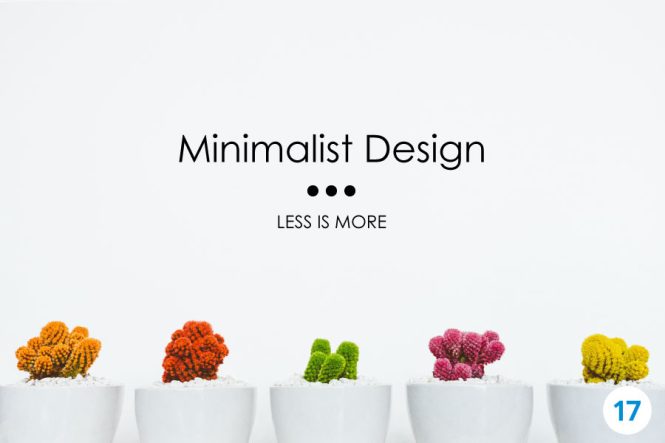

Minimalist design, with its core principle of “less is more,” is a captivating approach that elevates both aesthetics and functionality in any project, from architecture to product design. Its focus on essential elements and deliberate absence of clutter fosters a sense of calm and sophistication. Many people find themselves overwhelmed by a multitude of options and choices, struggling to create a space that feels both visually appealing and functional. Often, this stems from an abundance of unnecessary items and design elements that detract from the overall impact. Minimalist design presents a clear solution by focusing on core elements. This guide dives deep into minimalist design principles, outlining strategies for achieving a sophisticated and uncluttered aesthetic. It will cover key principles, discuss common challenges, and present practical solutions for you to apply in your own design endeavors. You’ll learn to harness the power of simplicity and create spaces that truly resonate with your desires.
Understanding the Core Principles of Minimalist Design
Defining Minimalism in Design
Minimalist design, at its heart, emphasizes simplicity and functionality. It’s about stripping away non-essential elements to highlight the core essence of a design. This often involves clean lines, neutral colors, and a focus on high-quality materials. The goal is to create a visually uncluttered space that feels serene and inviting, rather than overwhelming or cluttered. Instead of focusing on visual stimulation, it aims for subtle impact and effortless appeal.
Key Elements of Minimalist Design
Minimalist design hinges on several key principles. A significant aspect of minimalist design is the strategic use of negative space. This intentional emptiness creates visual harmony, drawing the eye to the essential elements within the space. Neutral color palettes are another hallmark, allowing the core focus to remain on form and function over color. Clean lines and geometric shapes further streamline the design. The thoughtful selection of high-quality materials is vital; durability and beauty often go hand-in-hand in minimalist aesthetics.
Common Design Challenges
People often struggle with achieving minimalism. They get caught in the trap of wanting to fill every space, leading to visual clutter. This struggle arises from a tendency to overfill spaces with decorations. One significant obstacle arises when the desire for an extensive collection of items outweighs the need for functional organization. Another challenge lies in navigating the initial discomfort of de-cluttering, which can be particularly daunting for those accustomed to more traditional or maximalist approaches. This can be a real emotional hurdle in adopting a minimalist design.
Creating a Minimalist Interior
Designing a Simple Living Room
A minimalist living room focuses on essential furniture pieces, such as a comfortable sofa, a coffee table, and a few well-chosen side tables. Avoid overcrowding the space with unnecessary décor. Consider incorporating large windows or mirrors to maximize natural light and create a sense of spaciousness. A simple color palette consisting of neutral tones like white, beige, gray, and black, will create a calm and harmonious ambiance. Consider the quality and functionality of the furniture to ensure its impact and durability.
Minimalist Bedroom Design
A minimalist bedroom thrives on simplicity. A comfortable bed, a bedside table or two, and well-chosen lighting are essential elements. Consider using light and airy fabrics for bedding and curtains. Opt for a neutral color scheme to create a sense of tranquility. Ensure that the space is properly organized to minimize visual clutter.
Implementing the "Less is More" Principle
A common challenge to overcome is the tendency to add decorations that end up detracting from the core aesthetic. One solution is to consciously curate the collection of items you bring into the room, focusing on pieces that serve a purpose or hold emotional significance for you. This ensures each item is meaningful and purposeful.
Utilizing Space Effectively
Multifunctional Furniture
Multifunctional furniture is a key element in minimalist design. Pieces that serve multiple purposes save space and minimize the need for additional furniture. Ottomans that double as seats and storage, for example, are great additions. Consider using convertible sofas or storage ottomans to increase functionality. A space can look fuller by strategically incorporating multi-functional furniture, avoiding the use of separate, smaller pieces that could lead to clutter.
The Role of Light and Color
Natural Light
Maximizing natural light is crucial in creating a minimalist space. Large windows or strategically placed mirrors help to reflect and enhance natural light throughout the room. Consider the direction of your windows and the best way to capitalize on their natural light properties. A room that is well-lit naturally feels more spacious and inviting, making it easier to maintain that sense of minimalist balance.
Color Palette Choices
Neutral color palettes, like beige, gray, white, and black, are common choices in minimalist design. Using a limited color palette allows the room’s form and function to shine. This concept is frequently used in modern design and architectural elements. The lack of excessive color choices creates a visually clean and uncluttered space.
Beyond the Basics: Advanced Minimalist Principles
Visual Hierarchy
Understanding visual hierarchy is critical to successful minimalist design. By prioritizing the essential elements and creating a clear visual hierarchy, you direct the viewer’s eye to the intended focus. You achieve this by strategically arranging furniture, lighting, and art. This is where a keen eye and a good knowledge of proportion can really bring together the design and give the space purpose. This is an essential part of minimalist design. It allows a feeling of calm and purposefulness to the interior design.
Texture and Material Selection
Even in minimalist design, careful selection of texture and materials can elevate the design. Combining different textures, like wood, metal, and fabric, can add depth and interest without overwhelming the space. The use of natural materials can tie in with the minimalist design to create an authentic and appealing space. High-quality materials will endure, and their long-lasting quality can contribute to the minimalist appeal of the design.
How can I incorporate minimalist principles into my existing space without starting from scratch?
You can implement minimalist principles into your existing space by focusing on decluttering and careful selection of key pieces. Start by identifying and removing unnecessary items. Then, strategically arrange the remaining items to create a balanced and harmonious layout. Choose a color palette that complements your space and emphasizes the core elements. By focusing on essential elements and decluttering, you can infuse a touch of minimalism into your existing design.
What are the benefits of a minimalist home in terms of mental well-being?
Minimalist spaces have been shown to promote relaxation and peace of mind. This is because, by eliminating visual clutter and unnecessary items, you free up your mental space to concentrate on the things that matter. Minimalist living fosters a sense of calm and clarity, allowing you to focus on the present moment and reduce stress from the sensory overload of clutter.
What are the biggest challenges in maintaining a minimalist lifestyle?
Maintaining a minimalist lifestyle can present challenges due to a tendency to accumulate items over time, requiring discipline and self-reflection. This sometimes leads to impulsiveness in buying items that are not truly essential. A consistent effort to evaluate new purchases is necessary for maintaining the integrity of the minimalist lifestyle.
Frequently Asked Questions
What are some common mistakes people make when trying to achieve a minimalist design?
People often fall into the trap of overcrowding their spaces with too much furniture or décor. Another pitfall is failing to declutter effectively, allowing visual clutter to accumulate. The fear of emptiness can lead to unnecessary filling and the use of decor that may not serve a specific purpose. It’s important to be mindful of those emotional and subconscious drivers behind the choice of objects and furniture.
In conclusion, minimalist design, or “less is more,” is a powerful approach to create visually appealing and functional spaces. By focusing on essential elements and removing distractions, we can achieve harmony and a sense of calm. Embrace minimalism in your design projects and discover how simplicity can elevate both aesthetics and functionality. Experiment with the principles outlined above and experience the transformative power of minimalism for yourself. Ready to embrace simplicity? Visit our website to explore more design ideas and resources! You can also connect with us on social media for inspiration and updates.